
Power Washer’s Guidebook: Airport Applications
Contributor: Ben Shelton, Chief Operations Officer, DirtZero, LLC, Nixa, MO / Published August 2014
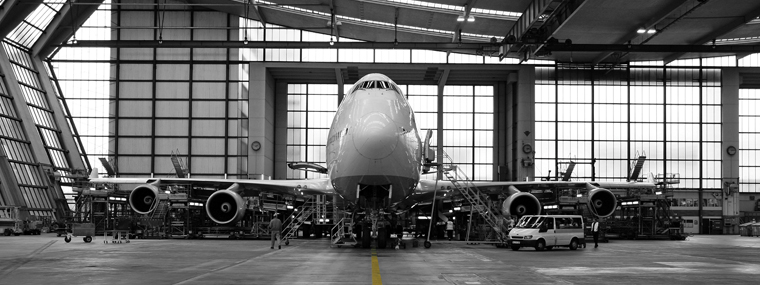
Editor’s Note: This entry also contains some information from a chapter in the 2002 Power Washer’s Guidebook, “Airport Applications,” which was written by Robert Nittinger, Jr., Vice President, Rampart, Coraopolis, PA.
Geographical Considerations
Airports are within an economically workable reach (travel distance) of contractors across the continental United States. Most metropolitan areas served by large airports with heavy jet traffic also have many smaller airports at their periphery, resulting in widespread possibilities.
Typical Job
Airport applications are exceptionally broad—ranging from runway cleaning, tarmac cleaning, graffiti removal, and sewer jetting to cleaning hangars, work areas, parking lots, and terminals. A typical airport job varies with the contractor.
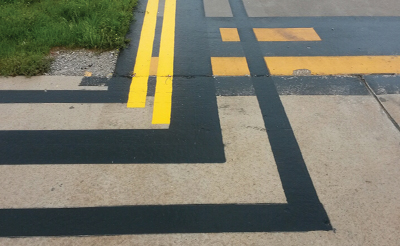
The majority of the work that we have completed for one of our local airports has been the removal of taxiway markings and paint stripes. Along with the removal, we have also done prep work for new markings and stripes.
We run 4000 psi, 7 gpm pressure washers that have the ability to run heat greater than 225 degrees. We have found through trial and error that a green, 25-degree tip coupled with heat above 200 degrees is the best method for removing paint markings and stripes. Using turbo nozzles was not as effective in removing the paint as was a tip that had more of a fan spray pattern.
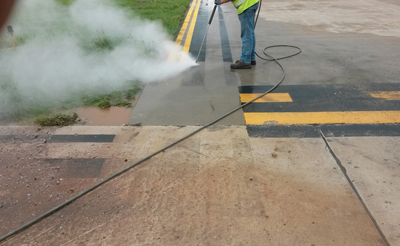
Heat is the key when trying to remove the paint because it helps aid in breaking down the paint, which allows the pressure of the water to more easily remove the markings and stripes. As far as the use of chemicals is concerned, we found that the added cost of the chemical and the time that it took to apply it to the markings and stripes—plus the dwell time to be absorbed into the paint, was not beneficial. Chemicals can be very costly, depending on the type used. And they can be hazardous to the environment.
On a typical paint removal job, we try to have anywhere from two to four guys working with a 4000 psi, 7 gpm, hot-water pressure washer. The key to doing a good job is to go slow and steady and to pay close attention to detail. When removing paint striping, you cannot rush the job or not all of the paint will get removed. Removing markings is a very slow and tedious job that a majority of contractors choose to avoid. Our goal is to remove one to one-and-a-half linear feet of paint per minute.
Techniques that Work Best
Slow and steady wins the race when it comes to removing paint stripes and taxiway markings. Keep the wand moving at a slow, steady pace, and don’t try to go too fast. Otherwise, you will have spots where you haven’t removed all of the paint. However, you might come to some areas where the markings and stripes are fairly old and heavily worn, which allow you to go at a quicker pace.
Exceptions
Removal of markings and cleaning of runways and taxiways are distinct endeavors. Major airports have specialized equipment for cleaning runways. The self-contained, powered equipment operates with high pressure (20,000 to 36,000 psi) and cleans a wide swath in a single pass. Units carry their own water tank and incorporate vacuums that collect the water after it is applied.
Small airports may contract for cleaning runways. High pressure (12,000 psi and up) will be needed, as will a supply of water. Understanding of airport protocol is a must. If the airport is open, even if cleaning is done at night, a contractor must be prepared to clear the runway of all equipment and personnel within minutes of being notified by the control tower to do so.
Equipment and Supplies
Other than plenty of manpower and a good, heated unit, one key factor in removing markings is a good water source. Depending on the area where the work is being done, there might not be a good water source available. The units that we use all have a 525-gal freshwater tank on them. However, that is usually not enough water to last the entire job.
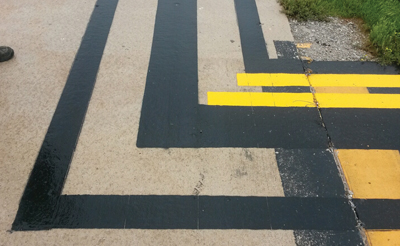
If water is readily available on site, make certain to bring at least a few hundred feet of water hose so you can refill the tank as you work. If water is not available on site, then I would suggest getting a water meter from the local city utility so that you can get water from a fire hydrant—or make a corresponding arrangement with the public utility in accordance with the regulations in the jurisdiction where the work is being done.
The more extensive entry a contractor makes into the airport applications sector, the more equipment will be necessary. Rigging, scaffolding, lifts, articulated-boom lifts, ladders, and portable lighting may all be needed in addition to pressure washer, waterjetting, and wastewater removal equipment.
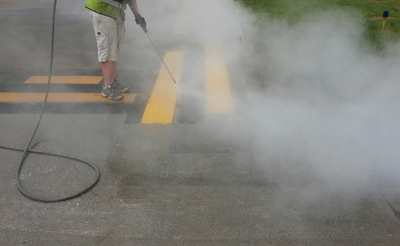
[Reminders: All local, state, and federal expectations for wastewater disposal, personal protective equipment, and safety training must be met. Regulators that keep a watchful eye on airport applications include the Environmental Protection Agency, Occupational Safety and Health Administration, Federal Aviation Administration, and Department of Transportation (DOT). For example, DOT is interested in wastewater being transported because it could contain hazardous material.]
How to Bill
When it comes to providing a bid for a large job for markings removal and surface preparation, our company gives two bid options: We give a price per linear foot/square foot. And we give an hourly rate with an estimated length of period to do the job based on previous experience. This gives the customer a guaranteed price to budget with or a price that could potentially be a lot lower, or maybe higher, than the guaranteed price.
Ancillaries
Runways, airplanes, hangars, terminals, parking garages—the components of an airport are many, and some of them fall into other categories in the Power Washer’s Guidebook. Consider all of them as possibilities, but for aircraft and runway cleaning, be prepared to become immersed in the industry and demonstrate special knowledge and capabilities.
Aircraft cleaning is a service provided to the airline rather than the airport. Planes are generally cleaned at least once each week, following instructions on pressure and chemicals that are provided by the original equipment manufacturer. There are generally more opportunities—but no less stringent guidelines—for contractors that want to work with owners of small planes. Military aircraft have their own set of specifications regarding how the work is to be done. (Everything from landing gear to rivets must be given careful attention, irrespective of the type of craft.)
Runways become coated with petroleum products and combustion residue, as well as other debris. They must be cleaned to standards set by the airport and established ultimately by aviation regulators. Method of cleaning will depend on the substrate—concrete or asphalt or some combination.
Problems to Avoid
The biggest problems that we have faced when doing stripe removal or prepping for paint is not having a clearly defined layout of what needs removed or what all needs prepped. Typically, someone from the airport and the striping company needs to be present when discussing the layout of the job. This helps to ensure that everybody is on the same page and that nothing has to be redone and no special trips made to redo work.
How to Fix Mistakes
When doing paint prep cleaning, it is not only important to make certain that the surface is thoroughly cleaned, but also that you have cleaned a wide enough portion of the surface for the width of the line that is going to be painted. To ensure that the cleaning is properly done, have the airport inspector and striping contractor thoroughly go over plans and blueprints with you. If possible, have an airport inspector mark different areas or sections to ensure the proper layout is done.
Ben Shelton is chief operations officer at DirtZero, a professional pressure washing company that specializes in fleet and flatwork cleaning across Southwest Missouri, Northwest Arkansas, and Northeast Oklahoma. The company takes pride in the quality of service it provides and in the level of professionalism its team displays.




